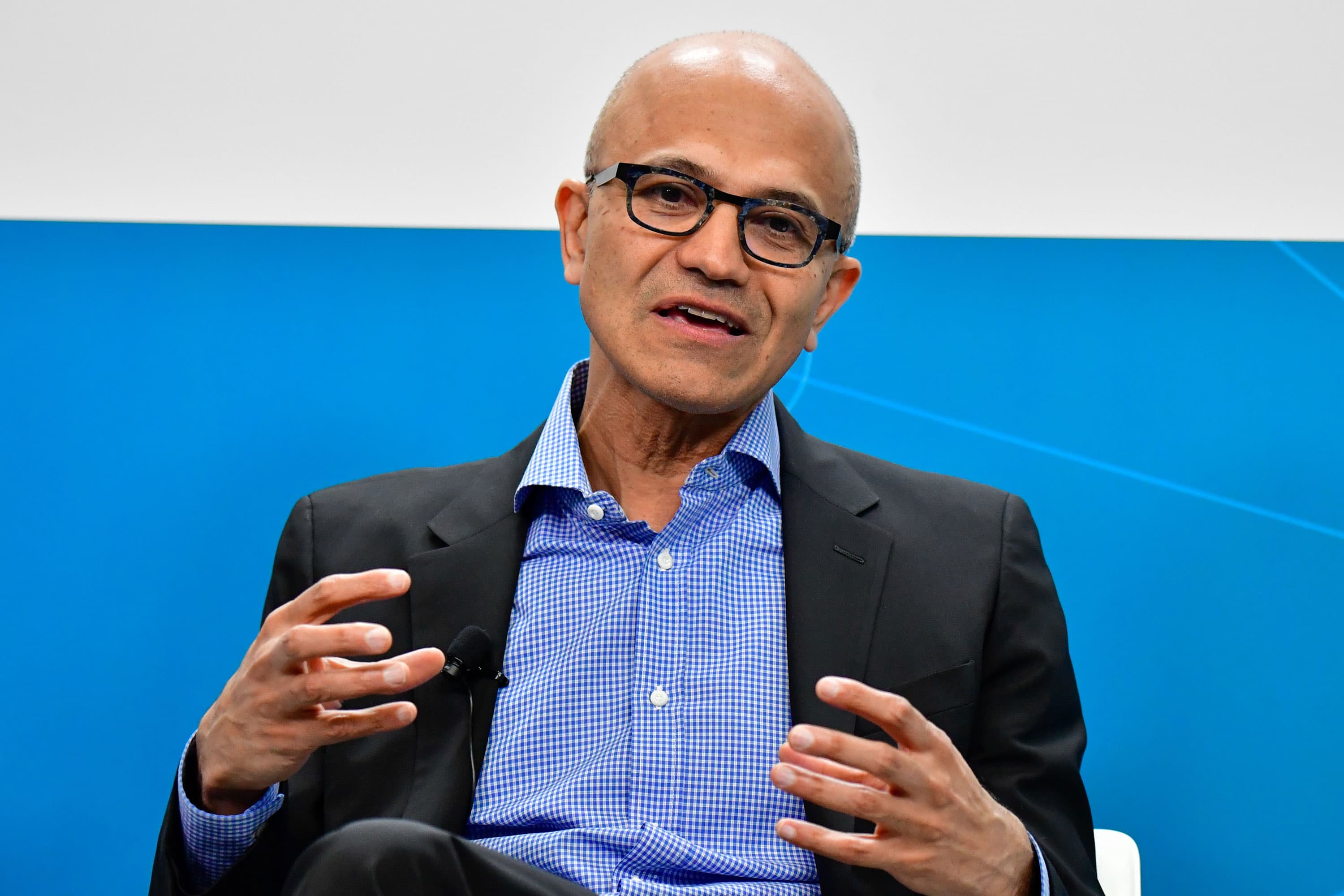Microsoft CEO Satya Nadella
Tobias Schwarz | AFP | Getty Images
Microsoft shares rose 2% in extended trading on Wednesday after the company reported fiscal third-quarter sales growth of 15%, fueled by its cloud business.
The company said in a statement that the coronavirus “had minimal net impact on the total company revenue” in the quarter and that ”effects of COVID-19 may not be fully reflected in the financial results until future periods.”
Here’s how the company did:
- Earnings: $1.40 per share, adjusted
- Revenue: $35.02 billion
Analysts polled by Refinitiv had expected $1.26 in adjusted earnings per share on $33.66 billion in revenue for the quarter, which ended on March 31.
Revenue grew 15% from $30.57 billion on an annualized basis in the quarter, according to the statement.
The More Personal Computing segment, containing Bing, Windows, Surface and Xbox, delivered $11.00 billion in revenue. That’s up 2.9% and above the $10.46 billion consensus among analysts surveyed by FactSet.
Microsoft said in February that it didn’t expect to meet the quarterly guidance it had provided for More Personal Computing. Chief Financial Officer Amy Hood had told analysts in January that the segment would generate revenue in the quarter of $10.75 billion to $11.15 billion.
The Productivity and Business Processes unit, which includes Dynamics, LinkedIn and Office, came up with $11.74 billion in revenue, up 14.7% and higher than the FactSet analyst consensus of $11.53 billion.
Microsoft’s Intelligent Cloud segment, featuring Azure, GitHub and server products including SQL Server and Windows Server, posted $12.28 billion in revenue, up 27.2% and more than the $11.79 billion consensus.
The initial impact of Covid-19 on the business was mixed. Cloud products like Teams and Azure and security saw increased usage as “customers shifted to work and learn from home,” Microsoft said. But on the downside, “In the final weeks of the quarter, there was a slowdown in transactional licensing, particularly in small and medium businesses, and a reduction in advertising spend in LinkedIn,” the company said.
And as Microsoft had predicted, revenue from Surface devices and Windows licenses from device makers saw gains as people rushed to work and learn from home. That was somewhat offset, though, by supply chain constraints in China that got better at the end of the quarter.
Earlier this month IDC estimated that PC shipments fell about 10% in the quarter because of reduced supply from China, where the coronavirus had its first major outbreak. Microsoft also ended support for Windows 7 in the period. Still, Microsoft’s expansion in cloud infrastructure, collaboration products and software-as-a-service should offset some of that weakness, Goldman Sachs analysts led by Heather Bellini wrote in a report this month.
“Partners called out strength in demand for laptops (Windows OEM and Surface), collaboration tools (including Office 365 and Microsoft Teams) and public cloud (including Desktop as a Service offerings), amongst other areas,” wrote the analysts, who recommend buying the stock. “Further, partners spoke to a potential acceleration in the pace of public cloud and SaaS adoption, as companies are now being forced to confront the difficulties in managing on-premise infrastructure.”
Microsoft’s Teams communication app reached record usage levels as people shifted to working from home, and the company canceled in-person events, including the Build developer conference. Also in the quarter, Microsoft announced the acquisitions of start-ups Affirmed Networks and Npm.
Microsoft co-founder and former CEO Bill Gates said in March that he was leaving the company’s board to spend more time with the Bill & Melinda Gates Foundation. He’s since been active laying out recommendations for how the world can address the coronavirus pandemic and get to a point where economies can begin to reopen.
Executives will discuss the results with analysts on a conference call starting at 5:30 p.m. Eastern time.
Microsoft shares are up about 12% for the year, while the S&P 500 is down almost 9%.
WATCH: Microsoft president on handling increased demand during coronavirus
